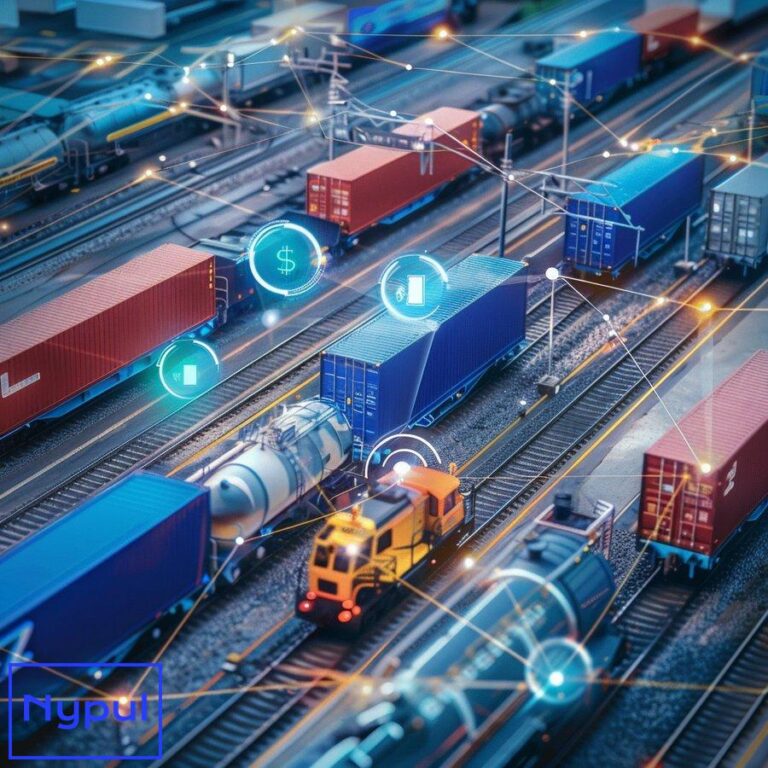What Are the Disadvantages of Container Transport
What are the hidden costs associated with container transport?
Container transport, while often viewed as a cost-effective solution for shipping goods, harbors several hidden costs that can significantly impact the overall expenditure of logistics operations. Understanding these costs is essential for businesses seeking to optimize their supply chain and minimize financial burdens.

1. Port Fees and Terminal Charges
Port fees and terminal charges are often overlooked when budgeting for container transport. These fees can include:
-
Docking Fees: Costs incurred for the time a vessel spends at the port.
-
Loading and Unloading Charges: Expenses associated with the handling of containers at the terminal.
-
Storage Fees: Charges for containers that remain at the port beyond the agreed timeframe.
These fees can accumulate quickly, especially if there are delays in unloading or transporting goods from the port.
2. Transportation Costs
Transportation costs extend beyond the initial shipping fees. Factors contributing to these costs include:
-
Drayage Fees: The cost of transporting containers from the port to the final destination. Drayage is typically charged per mile and can add up significantly, particularly for longer distances.
-
Fuel Surcharges: Fluctuating fuel prices can lead to unexpected surcharges that increase overall transport costs.
-
Vehicle Maintenance: Regular maintenance and repairs for trucks used in drayage can incur additional costs that impact the budget.
3. Insurance and Liability
Insurance is a critical component of container transport, but it also represents a hidden cost. Businesses must consider:
-
Cargo Insurance: Protects against loss or damage during transit. The cost of this insurance can vary based on the value of the goods being transported.
-
Liability Insurance: Covers potential damages caused during transportation. This is essential for protecting against legal claims arising from accidents or mishaps.
4. Customs and Regulatory Fees
Navigating customs and regulatory requirements can introduce hidden costs, including:
-
Duties and Tariffs: Import duties and tariffs can significantly increase the overall cost of goods transported via containers.
-
Customs Brokerage Fees: Hiring a customs broker to facilitate the clearance process incurs additional charges.
5. Container Management Costs
Managing containers involves various costs that can be easily overlooked:
-
Repositioning Costs: Empty containers need to be repositioned to ports where they are in demand, leading to additional transportation expenses.
-
Inventory Management: Keeping track of container inventory and ensuring timely returns can require sophisticated software and personnel, adding to operational costs.
6. Opportunity Costs
Opportunity costs represent potential revenue lost due to inefficiencies in the container transport process. For instance, delays in shipping can result in lost sales or contracts, particularly in industries where timely delivery is crucial.
Conclusion
The hidden costs associated with container transport can substantially affect a business’s bottom line. By understanding these costs, companies can develop more accurate budgets and strategies to mitigate financial risks. Awareness of port fees, transportation costs, insurance, customs fees, container management, and opportunity costs is vital for optimizing logistics operations and maintaining profitability.
How do space and capacity constraints affect container shipping?

Space and capacity constraints play a pivotal role in container shipping, influencing operational efficiency, cost management, and overall logistics performance. Understanding these constraints is essential for businesses aiming to streamline their supply chain processes.
1. Limited Terminal Space
Container terminals are often constrained by limited space, impacting their ability to handle incoming and outgoing shipments efficiently. Key issues include:
-
Stacking Limitations: Containers must be stacked to maximize space, but this can lead to delays if containers needed for immediate dispatch are buried beneath others.
-
Congestion: High traffic at terminals can result in delays, increasing turnaround times for vessels and trucks.
2. Vessel Capacity Constraints
The capacity of container ships directly affects shipping schedules and costs. Factors to consider include:
-
Maximum Load Limits: Each vessel has a maximum load capacity, which can limit the volume of goods transported in a single trip.
-
Underutilization: If a vessel is not fully loaded, the cost per container increases, leading to inefficiencies in shipping costs.
3. Impact on Pricing
Space and capacity constraints can lead to increased pricing for container transport. This can occur due to:
-
Surge Pricing: During peak seasons, limited space can result in higher shipping rates as demand outstrips supply.
-
Increased Drayage Costs: Limited terminal space can lead to longer wait times for trucks, increasing drayage costs.
4. Supply Chain Disruptions
Capacity constraints can disrupt the entire supply chain, leading to:
-
Delays in Delivery: When containers cannot be loaded or unloaded promptly, it results in delays that can affect customer satisfaction.
-
Inventory Management Challenges: Businesses may struggle to maintain optimal inventory levels due to unpredictable shipping schedules.
5. Mitigation Strategies
To address space and capacity constraints, businesses can implement several strategies:
-
Advanced Planning: Utilizing forecasting tools to predict demand can help in planning shipping schedules more effectively.
-
Collaborative Logistics: Partnering with other companies to share container space can optimize capacity utilization and reduce costs.
-
Investing in Technology: Implementing advanced terminal management systems can enhance container tracking and improve space management.
Conclusion
Space and capacity constraints significantly impact container shipping, affecting operational efficiency, pricing, and supply chain reliability. By understanding these constraints and implementing effective strategies, businesses can enhance their logistics performance and reduce costs associated with container transport.
What logistical challenges arise in container transportation?
![]()
Container transportation presents numerous logistical challenges that can impact efficiency, cost-effectiveness, and reliability. Addressing these challenges is crucial for businesses aiming to optimize their logistics operations.
1. Coordination and Communication
Effective coordination and communication among various stakeholders are vital for successful container transportation. Challenges include:
-
Multiple Stakeholders: Involvement of shipping lines, port authorities, customs officials, and trucking companies can complicate communication.
-
Information Delays: Delays in information sharing can lead to mismanagement of schedules and resources.
2. Infrastructure Limitations
The quality of infrastructure significantly affects container transportation. Key issues include:
-
Port Congestion: High traffic volumes at ports can lead to delays in loading and unloading containers.
-
Road Conditions: Poor road conditions can hinder the efficient transport of containers from ports to final destinations.
3. Regulatory Compliance
Navigating regulatory requirements can pose logistical challenges, including:
-
Customs Regulations: Compliance with customs regulations can be complex and time-consuming, leading to potential delays.
-
Environmental Regulations: Adhering to environmental regulations may require additional documentation and processes, complicating logistics.
4. Risk of Damage and Loss
The risk of damage and loss during transportation is a significant concern. Factors contributing to this risk include:
-
Handling Procedures: Improper handling during loading and unloading can lead to damage to containers and their contents.
-
Theft and Security Risks: Containers are vulnerable to theft, particularly in high-crime areas.
5. Capacity Management
Managing capacity effectively is crucial for minimizing costs and ensuring timely deliveries. Challenges include:
-
Overcapacity: Excess capacity can lead to inefficiencies and increased costs.
-
Underutilization: Conversely, underutilization of container space can result in higher shipping costs per unit.
6. Seasonal Demand Fluctuations
Seasonal fluctuations in demand can complicate logistics planning. Businesses must be prepared for:
-
Peak Seasons: Increased demand during peak seasons can strain resources and lead to delays.
-
Off-Peak Seasons: Conversely, off-peak seasons may lead to underutilization of resources, impacting profitability.
Conclusion
Logistical challenges in container transportation can significantly affect operational efficiency and cost management. By addressing coordination issues, infrastructure limitations, regulatory compliance, damage risks, capacity management, and seasonal demand fluctuations, businesses can enhance their logistics performance and ensure reliable container transport.
Why is container transport slower than other shipping methods?
Container transport is often perceived as slower than other shipping methods, such as air freight or rail transport. Several factors contribute to this perception, impacting delivery times and overall logistics efficiency.
1. Loading and Unloading Times
The process of loading and unloading containers can be time-consuming. Key factors include:

-
Terminal Operations: Delays in terminal operations, such as congestion and equipment availability, can extend loading and unloading times.
-
Manual Handling: In some cases, manual handling of containers can slow down the process compared to automated systems.
2. Transit Times
Transit times for container transport can be longer due to several reasons:
-
Maritime Shipping Routes: Container ships often follow longer maritime routes to reach their destinations, increasing overall transit times.
-
Port Delays: Delays at ports due to congestion or customs processing can further extend transit times.
3. Intermodal Transfers
Container transport frequently involves multiple modes of transportation, leading to potential delays. Challenges include:
-
Transfer Times: Transferring containers between ships, trucks, and trains can introduce delays, particularly if schedules are not synchronized.
-
Drayage Delays: The time taken to transport containers from ports to final destinations via drayage can add to overall delivery times.
4. Regulatory Compliance
Compliance with regulatory requirements can slow down container transport. Factors include:
-
Customs Inspections: Customs inspections can lead to delays in processing containers, impacting delivery schedules.
-
Documentation Requirements: The need for extensive documentation can slow down the movement of containers through ports.
5. Seasonal Demand Fluctuations
Seasonal demand fluctuations can impact container transport speeds. During peak seasons, increased demand can lead to:
-
Congestion: High volumes of containers can result in congestion at ports, slowing down operations.
-
Resource Strain: Limited resources during peak seasons can lead to delays in loading and unloading.
Conclusion
Container transport is often slower than other shipping methods due to loading and unloading times, transit times, intermodal transfers, regulatory compliance, and seasonal demand fluctuations. Understanding these factors can help businesses manage expectations and optimize their logistics strategies.
What security and safety risks are inherent in container shipping?
Container shipping, while generally considered a secure method of transporting goods, is not without its security and safety risks. Identifying and mitigating these risks is essential for ensuring the safety of cargo and the integrity of the supply chain.
1. Theft and Pilferage
The risk of theft and pilferage is a significant concern in container shipping. Factors contributing to this risk include:
-
High-Value Cargo: Containers carrying high-value goods are often targeted by thieves, particularly in high-crime areas.
-
Inadequate Security Measures: Insufficient security measures at ports and terminals can increase the likelihood of theft.
2. Damage During Transit
The potential for damage during transit is a critical safety risk. Key issues include:
-
Handling Procedures: Improper handling during loading and unloading can lead to damage to containers and their contents.
-
Environmental Factors: Exposure to harsh weather conditions during transit can compromise the integrity of containers and their cargo.
3. Container Integrity
Maintaining the integrity of containers is vital for ensuring the safety of goods. Risks include:
-
Structural Damage: Containers can suffer structural damage during transport, leading to potential leaks or contamination of cargo.
-
Wear and Tear: Over time, containers may experience wear and tear that can compromise their ability to protect cargo.
4. Hazardous Materials
Transporting hazardous materials presents unique safety risks. Considerations include:
-
Regulatory Compliance: Ensuring compliance with regulations governing the transport of hazardous materials is essential for safety.
-
Emergency Response: The potential for accidents involving hazardous materials necessitates effective emergency response plans.
5. Cybersecurity Threats
With the increasing reliance on technology in logistics, cybersecurity threats have become a concern. Risks include:
-
Data Breaches: Unauthorized access to sensitive information can compromise the security of logistics operations.
-
Operational Disruptions: Cyberattacks can disrupt logistics operations, leading to delays and increased costs.
Conclusion
Container shipping involves various security and safety risks, including theft, damage during transit, container integrity issues, hazards associated with hazardous materials, and cybersecurity threats. By understanding these risks and implementing effective mitigation strategies, businesses can enhance the security and safety of their container shipping operations.
How do regulatory and compliance issues impact container transport?
Regulatory and compliance issues play a significant role in container transport, influencing operational efficiency, cost management, and overall logistics performance. Understanding these issues is essential for businesses seeking to navigate the complexities of international shipping.
1. Customs Regulations
Customs regulations are a critical aspect of container transport. Key considerations include:
-
Documentation Requirements: Compliance with documentation requirements, such as bills of lading and customs declarations, is essential for smooth customs clearance.
-
Tariffs and Duties: Understanding applicable tariffs and duties is crucial for accurate cost estimation and budgeting.
2. Environmental Regulations
Environmental regulations can impact container transport in several ways:
-
Compliance Costs: Meeting environmental regulations may require investments in technology and processes, leading to increased operational costs.
-
Sustainability Initiatives: Businesses may need to implement sustainability initiatives to comply with regulatory requirements, impacting logistics strategies.
3. Safety and Security Regulations
Compliance with safety and security regulations is essential for ensuring the integrity of container transport. Considerations include:
-
Cargo Security: Adhering to security regulations, such as those governing the transport of high-value goods, is crucial for mitigating theft risks.
-
Safety Protocols: Implementing safety protocols to protect workers and cargo during loading and unloading is essential for compliance.
4. International Regulations
Navigating international regulations can complicate container transport. Factors to consider include:
-
Variability in Regulations: Different countries have varying regulations governing customs, safety, and environmental standards, necessitating careful planning.
-
Trade Agreements: Understanding trade agreements and their implications for container transport is essential for optimizing logistics strategies.
5. Compliance Monitoring
Ongoing compliance monitoring is crucial for businesses engaged in container transport. Key considerations include:
-
Audit Requirements: Regular audits may be necessary to ensure compliance with regulatory requirements, leading to additional operational costs.
-
Training and Education: Providing training and education for staff on regulatory compliance is essential for maintaining operational efficiency.
Conclusion
Regulatory and compliance issues significantly impact container transport, influencing customs regulations, environmental compliance, safety and security protocols, international regulations, and compliance monitoring. By understanding these issues and implementing effective strategies, businesses can navigate the complexities of container transport and optimize their logistics operations.
Disadvantages of Container Transport: An Overview
Container transport has transformed the logistics industry, offering numerous advantages. However, it also presents several disadvantages that businesses must consider when evaluating their shipping options. Understanding these disadvantages is crucial for making informed decisions in logistics management.
1. High Initial Investment
The initial investment required for container transport can be substantial. Key considerations include:
-
Infrastructure Costs: Developing the necessary infrastructure, including ports and terminals, requires significant financial investment.
-
Equipment Costs: Purchasing or leasing containers and handling equipment can add to the initial costs of container transport.
2. Space Constraints
Space constraints can pose challenges in container transport. Factors include:
-
Limited Terminal Space: Insufficient space at terminals can lead to congestion and delays in loading and unloading containers.
-
Stacking Limitations: The need to stack containers can complicate operations and increase turnaround times.
3. Complexity of Operations
The complexity of container transport operations can lead to inefficiencies. Considerations include:
-
Coordination Challenges: Coordinating multiple stakeholders, including shipping lines, port authorities, and trucking companies, can complicate logistics operations.
-
Intermodal Transfers: The need for intermodal transfers can introduce delays and increase the risk of damage or loss.
4. Environmental Impact
Container transport can have negative environmental impacts. Key issues include:
-
Carbon Emissions: The carbon footprint associated with container transport can contribute to environmental degradation.
-
Waste Generation: The use of containers can lead to waste generation, particularly if containers are not reused or recycled.
5. Vulnerability to Disruptions
Container transport is vulnerable to various disruptions that can impact operations. Factors include:
-
Natural Disasters: Events such as hurricanes or earthquakes can disrupt shipping schedules and damage infrastructure.
-
Geopolitical Risks: Political instability in key shipping regions can lead to delays and increased costs.
Conclusion
While container transport offers numerous advantages, it also presents several disadvantages that businesses must consider. High initial investments, space constraints, operational complexity, environmental impacts, and vulnerability to disruptions are critical factors influencing logistics decisions. By understanding these disadvantages, businesses can make informed choices and develop strategies to mitigate potential risks in container transport.




